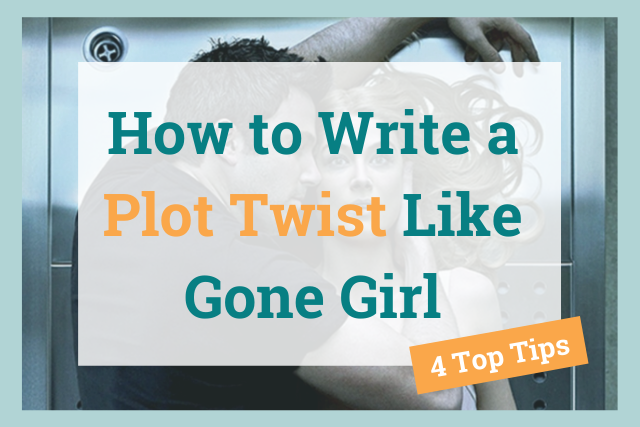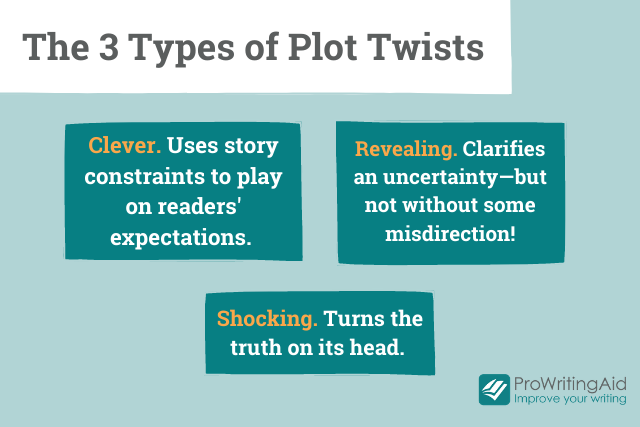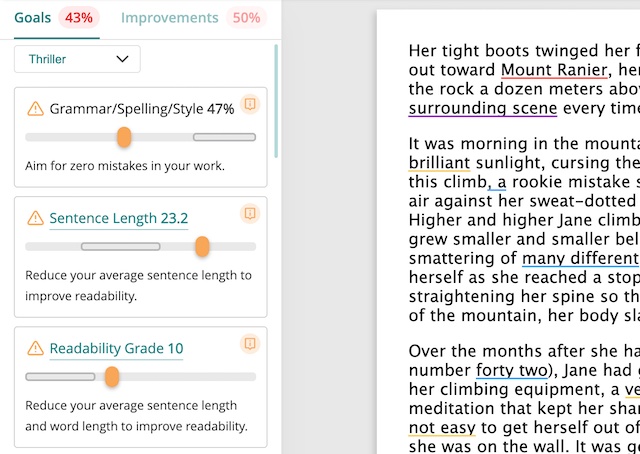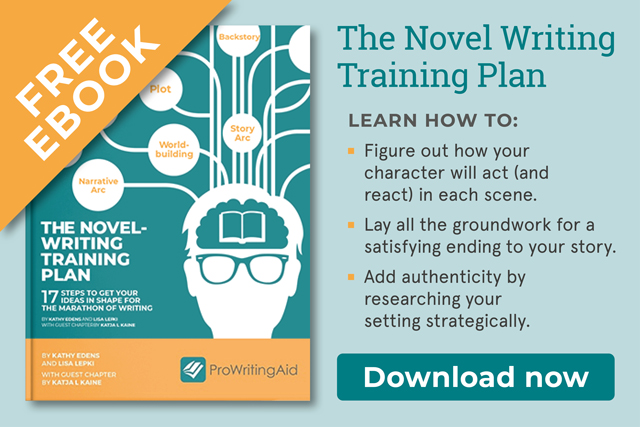
As a reader, don’t you love the mind-blowing plot twist that seems to come out of nowhere, yet makes complete sense? There’s something deeply absorbing in a good plot twist you didn’t see coming; it sticks with you, sometimes for years.
Plot twists can happen in the middle of your story, creating a feverish tension that keeps readers turning the pages to see how this new twist will play out next. Other plot twists happen at the climax of a story, resonating with you long after the last page.
When Shouldn't You Write a Plot Twist?
As an author, don’t you want to create the mind-blowing plot twist that leaves readers begging you to write more books? Maybe the kind that result in big movie deals…
Wait.
If your writing is a means to an end, it’s doubtful your plot twist will make the big bang needed to get on the big screen. Because you can’t force a plot twist; readers will smell it a mile away.
So how do you create a successful plot twist? Let’s start with the basics.
Types of plot twists
Plot twists fall into one of three different types, depending on the effect they have in the story.

Clever
A clever plot twist uses story constraints to throw in an interesting twist that is just clever. You didn’t see it coming, but when it happens, you think, "Oh, that is so good." The best example, IMHO, is the movie Shattered with Gerard Butler and Pierce Brosnan. The whole movie was clever with a huge plot twist at the end. No spoilers.
Revealing
This plot twist culminates in the answers to uncertainty in your story. Things are not what they seem and misdirection keeps readers guessing. Then the plot twist makes all things clearer. Consider how, as the story unravels in Gone Girl, you’re not quite sure what to think. Did Nick do it?
Shocking
This twist completely reverses what you believe is true in the story. At the end, it leaves readers thinking, "Boy, I did not see that coming." But in a good way. William Faulkner’s short story, "A Rose for Emily," has an incredible twist at the end that is shocking.
Twisting Readers’ Assumptions
Each plot twist generates different feelings in your readers. They expect certain things to happen in your story. For example, readers expect honesty, right? But with a plot twist, things are never what they seem. And if everything were true in your story, it would be pretty boring. Regardless of the type of plot twist you choose, you have two options for playing with your readers’ expectations:
False Assumptions
Lead them towards thinking what they feel and believe about your main character is true. Then prove their assumptions false by introducing the actual reality. A wonderful example is the book The Woman in the Window. Without giving away anything, who you thought was the bad guy wasn’t true. Another great example is Shutter Island where nothing is what it seems.
True, but Different, Assumptions
While you prove readers’ assumptions to be true, it’s in a different way. If you’ve read Gone Girl, did it end the way you thought it would? Another perfect example is the novel My Sister’s Keeper. You know the main character’s sister will die, but there’s a big twist at the end. (NOTE: Do not watch the movie first!) One more bonus example is the book The Fault in Our Stars. Absolutely no spoilers here.
Tips for Crafting a Mind-Blowing Plot Twist
Plot twists are hard work. You must plant hints and clues along the way without giving too much away. And you don’t want your reader to guess the twist before it happens. Here are tips to help you.
1. Throw Out the Obvious
Brainstorm plot twists. Come up with 5-10. Then throw all of those out. They’re too obvious. If they came that easily to you, your readers will see them, too.
Now brainstorm another round of plot twists. And throw those out because you still haven’t found the golden nugget. You’re looking for that one idea that makes you think, "Whoa. No one will guess that."
Remember, the more impossible the situation your main character finds herself in, the more inevitable and believable her solution must be.
2. Use Misdirection
Like a magician, keep your audience’s attention focused on your right hand while the magic happens with the left. Lead them on a merry chase and make them think they’ve got this figured out. Then you can pull the rug out from under them.
Consider using:
- Red herring. These are bits of false information or clues that lead them in the wrong direction.
- Dead end. Readers thought they were on the right path, but it's a dead end. Now what?
- Subvert attention. Get the action going and subtly drop in a clue during it. Readers will be so focused on what’s going on, they won’t realize it’s a clue.
3. Crank Up the Foreshadowing
Foreshadowing is a must to plant clues along the way. You want your reader to think "I should have seen that coming" or "Now it all makes sense" based on the clues you’ve planted.
We have an excellent article called "How to Foreshadow Like Alfred Hitchcock" that is a must-read on this point. No reason to recreate the wheel.
4. Avoid Gimmicks
Be straight with your readers. Don’t try gimmicks or cheap tricks. You never want your reader to feel deceived, played, or insulted. Reward your reader’s investment in your story with an amazing plot twist, not some cheap smoke and mirrors.
Stay away from dream sequences. They don’t work. More likely, you’ll make readers angry enough not to pick up any of your subsequent books.
Don't Sacrifice Your Story
As we suggested earlier, you can't force a plot twist. If you're adding a twist to make your idea seem more interesting, the problem is probably somewhere else. Check out our guide to finding and fixing plot holes to make sure a plot twist is what your story needs.
On the other hand, if the twist was in your plan from the beginning, you need to make sure your reader cares enough about the rest of your plot to be gripped by the twist.
A sure-fire way to lose your reader is by making avoidable mistakes. We're talking grammar and spelling issues, of course, but also poor readability, distracting dialogue tags, overusing emotion tells and other errors that will make your reader stop reading.
ProWritingAid's 25 writing reports cover every area you need to focus on to connect with your reader. You'll receive scores for each report, helping you work out where to focus your time. Once you're ready to edit, ProWritingAid's in-text suggestions will help you make quick changes with big impacts.
You can even select your writing style and genre to tailor your suggestions and targets for your purpose:

From actionable reports and real-time editing progress tracking to author comparisons and detailed writing guides, ProWritingAid keeps everything you need to remember about good writing in one place.
If you're looking for an editing tool built for writers like you, you've found it.
Tell Us Your Favorite Plot Twists
Plot twists can amaze and blow your mind, or they can die a sad death. Make yours the best it can be with the suggestions above.
This barely brushes the surface of plot twists. Perhaps we need a companion article that goes more in-depth? And what’s one novel with a mind-blowing plot twist you’ll never forget? Let us know in the comments below.


